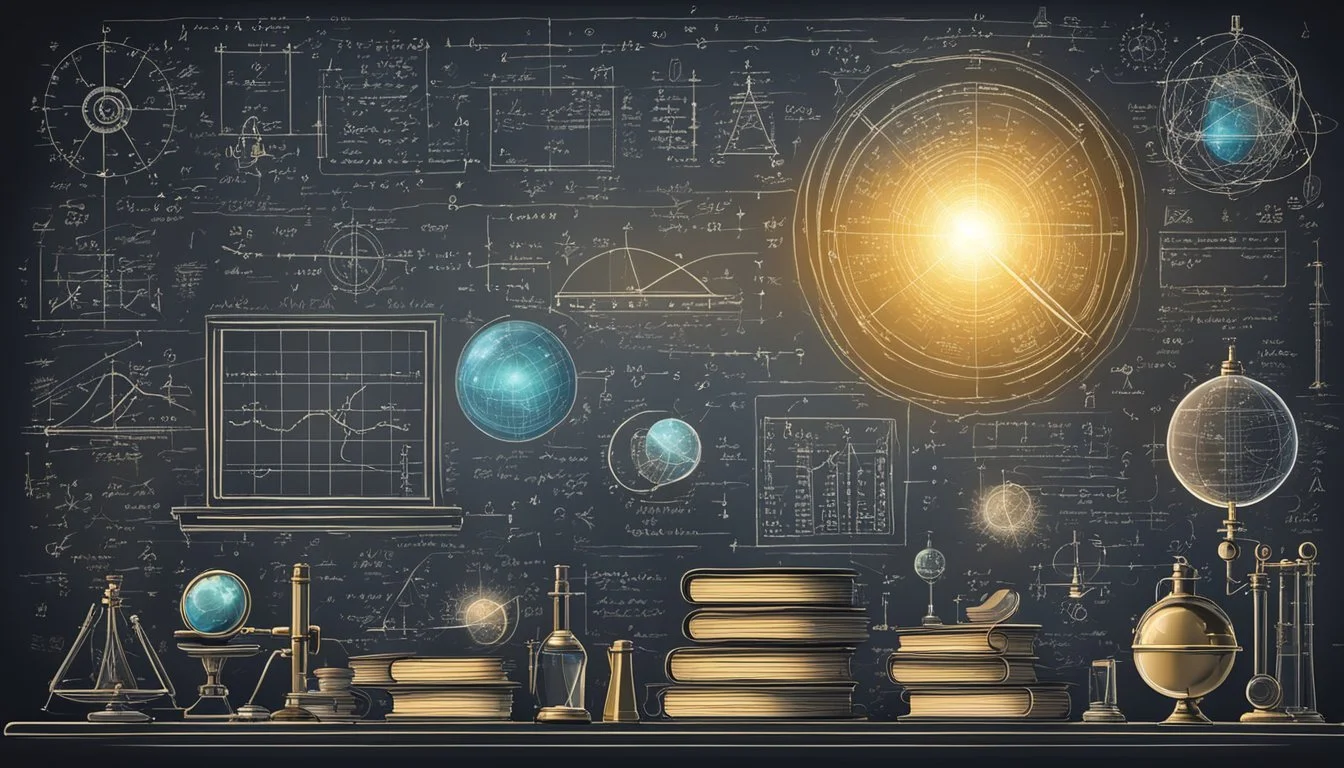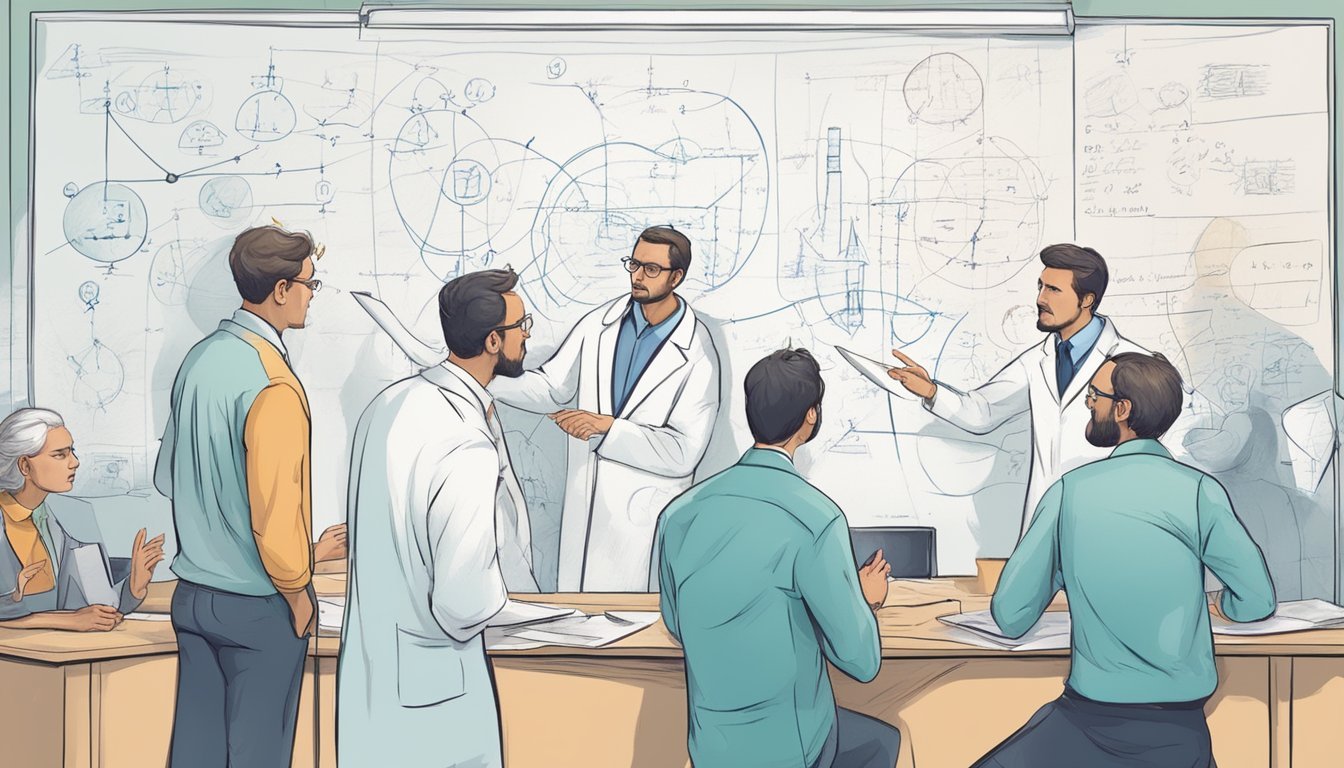Unraveling Genius: The Real Stephen Hawking Story
Beyond the Wheelchair and Equations
Stephen Hawking's life was a testament to the power of the human mind. Born in Oxford in 1942, he would go on to become one of the most renowned physicists of the 20th and 21st centuries. Despite being diagnosed with a rare form of motor neuron disease at the age of 21, Hawking's intellectual prowess and determination led him to revolutionize our understanding of the universe.
His groundbreaking work on black holes and the origins of the cosmos captured the imagination of scientists and the public alike. Hawking's ability to explain complex scientific concepts in accessible terms made him a global icon, bridging the gap between theoretical physics and popular culture.
Beyond his scientific achievements, Hawking's personal journey inspired millions. His resilience in the face of physical limitations and his sharp wit demonstrated that the human spirit could triumph over seemingly insurmountable obstacles. This story of genius, perseverance, and the quest for knowledge continues to captivate and motivate people around the world.
Early Life and Education
Stephen Hawking's journey to scientific greatness began in his formative years. His upbringing, education, and early research laid the foundation for his revolutionary contributions to physics and cosmology.
Childhood and Family Background
Stephen William Hawking was born on January 8, 1942, in Oxford, England. His parents, Frank and Isobel Hawking, were both Oxford graduates. Frank worked as a medical researcher, while Isobel was a secretary.
The Hawking household valued education and intellectual pursuits. Stephen grew up with two younger sisters and an adopted brother. From an early age, he displayed a keen interest in how things worked.
His family moved to St. Albans when Stephen was 8. There, he attended St. Albans School, where his exceptional intellect became apparent.
Oxford and Cambridge Years
In 1959, at age 17, Hawking began his studies at University College, Oxford. He initially wanted to study mathematics, but it wasn't available, so he chose physics instead.
Despite finding his coursework unchallenging, Hawking excelled. He graduated in 1962 with a first-class honors degree in natural science.
He then moved to Trinity Hall, Cambridge, for his graduate studies. It was during this time that Hawking began to experience the first symptoms of amyotrophic lateral sclerosis (ALS).
Doctoral Research and Thesis
At Cambridge, Hawking focused on cosmology and general relativity under the supervision of Dennis Sciama. His doctoral research explored the origins of the universe.
In 1966, Hawking completed his Ph.D. thesis titled "Properties of Expanding Universes". This work laid the groundwork for his future breakthroughs in black hole theory and the nature of spacetime.
Despite his advancing illness, Hawking's intellectual abilities remained sharp. His thesis demonstrated his exceptional talent for tackling complex cosmological problems.
Contributions to Physics
Stephen Hawking made groundbreaking discoveries in theoretical physics and cosmology. His work revolutionized our understanding of black holes, the origins of the universe, and the nature of space-time.
Hawking Radiation
Hawking's most famous contribution is the concept of Hawking radiation. In 1974, he proposed that black holes are not entirely black, but emit a form of thermal radiation. This radiation causes black holes to slowly evaporate over time.
The discovery challenged the prevailing notion that nothing could escape a black hole's gravitational pull. It bridged quantum mechanics and general relativity, two fundamental theories previously thought incompatible.
Hawking radiation has profound implications for our understanding of the universe's fate. It suggests that black holes are not eternal and will eventually disappear.
Black Hole Thermodynamics
Building on his work on Hawking radiation, Stephen Hawking developed the field of black hole thermodynamics. He showed that black holes obey laws similar to those of thermodynamics.
Hawking demonstrated that a black hole's surface area is analogous to entropy in thermodynamic systems. This insight led to the formulation of the second law of black hole mechanics.
His work revealed that black holes have a temperature and can be described using concepts from statistical mechanics. This breakthrough unified gravity, quantum theory, and thermodynamics in a novel way.
Theoretical Cosmology
Hawking made significant contributions to theoretical cosmology, particularly in understanding the early universe. He worked with Roger Penrose to develop singularity theorems in general relativity.
These theorems showed that singularities, such as the Big Bang, are inevitable under general relativity. This work provided strong evidence for the Big Bang theory of the universe's origin.
Hawking also proposed the no-boundary proposal with James Hartle. This model suggests the universe has no boundary in space-time, challenging traditional notions of the universe's beginning.
Singularities and the Big Bang
Hawking's work on singularities extended beyond black holes to the origins of the universe itself. He demonstrated that the laws of physics break down at singularities like the Big Bang.
His research suggested that the universe began as an infinitely dense point, expanding rapidly in the Big Bang. This work helped establish the Big Bang as the prevailing theory of cosmic origins.
Hawking also explored the possibility of avoiding singularities through quantum effects. This led to his proposals about the nature of time and space at the universe's beginning, influencing modern cosmological theories.
Notable Works
Stephen Hawking's scientific legacy is profound, with several groundbreaking publications that transformed our understanding of the cosmos. His books made complex physics accessible to the general public, sparking widespread interest in the mysteries of the universe.
A Brief History of Time
Published in 1988, "A Brief History of Time" catapulted Hawking to international fame. The book explains complex concepts like black holes, the Big Bang, and the nature of the universe in layman's terms.
It explores fundamental questions about the origin and evolution of the cosmos. Hawking delves into topics such as space and time, the expanding universe, and the search for a unified theory of physics.
"A Brief History of Time" spent a record-breaking 237 weeks on the Sunday Times bestseller list. It has sold over 10 million copies worldwide and been translated into more than 40 languages.
The Universe in a Nutshell
Released in 2001, "The Universe in a Nutshell" builds upon Hawking's earlier work. This book tackles cutting-edge theories in theoretical physics, including M-theory and the possibility of multiple universes.
Hawking uses vivid illustrations and analogies to explain complex ideas. He discusses the nature of time, the shape of space, and the quest for a "theory of everything."
The book won the Aventis Prize for Science Books in 2002. It further solidified Hawking's reputation as a brilliant scientist and gifted communicator of complex ideas.
Black Holes and Baby Universes
"Black Holes and Baby Universes and Other Essays," published in 1993, is a collection of Hawking's essays and lectures. The book covers a wide range of topics, from the nature of black holes to the possibility of time travel.
Hawking explores his groundbreaking work on black hole radiation, now known as Hawking radiation. He also discusses the concept of baby universes - tiny, self-contained realms that might bud off from our own universe.
The book provides insights into Hawking's personal life and his views on disability and science. It showcases his ability to blend scientific rigor with accessible explanations for a general audience.
Public Perception and Influence
Stephen Hawking captured the public imagination and inspired scientists worldwide. His work and persona transcended academia, leaving an indelible mark on popular culture and scientific progress.
In Popular Culture
Hawking became a household name, recognized far beyond scientific circles. His bestselling book "A Brief History of Time" introduced complex cosmological concepts to millions of readers. Hawking's distinctive computerized voice and wheelchair became iconic symbols.
He made cameo appearances on popular TV shows like "The Simpsons" and "The Big Bang Theory," cementing his status as a cultural icon. His life story was dramatized in the award-winning film "The Theory of Everything."
Hawking's wit and humor endeared him to the public. He often used self-deprecating jokes in interviews and speeches, making complex topics more approachable.
Inspiring the Scientific Community
Hawking's groundbreaking work on black holes and the origins of the universe revolutionized theoretical physics. His discoveries sparked new avenues of research and inspired generations of scientists.
He championed the search for a unified theory of physics, encouraging collaboration across disciplines. Hawking's ability to visualize complex concepts without relying on mathematical equations impressed peers and students alike.
His resilience in the face of physical challenges motivated many in the scientific community. Hawking's work ethic and determination set a powerful example for researchers worldwide.
Advocacy and Legacy
Beyond his scientific contributions, Hawking was a vocal advocate for disability rights and accessibility in science. He championed increased funding for motor neurone disease research and raised awareness about the condition.
Hawking warned about the potential dangers of artificial intelligence and climate change. His public statements on these issues helped bring scientific concerns to the forefront of public discourse.
The Stephen Hawking Medal for Science Communication, established in his honor, recognizes those who promote public understanding of science. His legacy continues through the work of the Stephen Hawking Foundation, supporting research and empowering people with disabilities.
Personal Struggles and Health
Stephen Hawking faced immense physical challenges throughout his life due to amyotrophic lateral sclerosis (ALS). Despite his deteriorating health, he adapted remarkably and continued his groundbreaking scientific work.
Living with ALS
Stephen Hawking was diagnosed with ALS at age 21, shortly after beginning his PhD studies at Cambridge. Doctors initially gave him only a few years to live. The disease gradually paralyzed his body over decades, eventually leaving him able to move only a few facial muscles.
Hawking defied medical expectations, living with ALS for over 50 years. His longevity with the condition was extremely rare. Throughout his life, he required increasing levels of care and assistance with daily tasks.
Adapting to Disabilities
As his physical abilities declined, Hawking adapted using assistive technologies. In the 1980s, he began using a speech synthesizer controlled by hand movements. Later, he operated it through cheek muscle twitches detected by an infrared switch on his glasses.
This allowed Hawking to communicate, write books, and deliver lectures. He controlled his wheelchair through head and eye movements. Despite his disabilities, Hawking maintained an active academic career, traveled globally, and even experienced zero gravity.
Professional Collaborations and Disputes
Stephen Hawking engaged in numerous collaborations and debates throughout his career, shaping the field of theoretical physics. His work with fellow scientists led to groundbreaking discoveries, while his disputes sparked intense discussions in the scientific community.
Notable Collaborations
Hawking's partnership with Roger Penrose in the 1960s proved highly influential. Together, they developed singularity theorems in general relativity, demonstrating that singularities are not mathematical artifacts but real phenomena. This work laid the foundation for much of Hawking's later research on black holes.
In the 1970s, Hawking collaborated with Jacob Bekenstein on black hole thermodynamics. Their work led to the formulation of Hawking radiation, a theoretical argument for the emission of radiation from black holes.
Hawking also worked closely with James Hartle on the no-boundary proposal, a model of the early universe that attempts to describe the initial conditions of the cosmos.
Scientific Debates
Hawking engaged in several high-profile scientific disputes throughout his career. One notable disagreement was with Leonard Susskind over the information paradox in black holes. This debate lasted for decades and led to significant advancements in our understanding of black hole physics.
Another contentious issue arose between Hawking and Neil Turok regarding the inflationary model of the universe. Their differing views on the nature of cosmic inflation sparked lively discussions in the cosmology community.
Hawking also famously made a bet with Kip Thorne and John Preskill about the nature of black holes, which he eventually conceded in 2004. These debates often pushed the boundaries of theoretical physics and stimulated new areas of research.
Later Life and Death
Stephen Hawking's later years were marked by continued scientific contributions and public appearances. Despite his physical limitations, he remained an active researcher and author well into his 70s.
In 2009, Hawking stepped down from his position as Lucasian Professor of Mathematics at Cambridge University. However, he continued his work as Director of Research at the Centre for Theoretical Cosmology.
Hawking's final scientific paper, completed just days before his death, explored the possibility of multiple universes. This work demonstrated his enduring passion for unraveling cosmic mysteries.
On March 14, 2018, Hawking passed away peacefully at his home in Cambridge, England. He was 76 years old. His death coincided with Albert Einstein's birthday and Pi Day, a fitting tribute to his life in science.
Hawking's ashes were interred at Westminster Abbey, between the graves of Isaac Newton and Charles Darwin. This honor recognized his significant contributions to scientific knowledge and popular understanding of complex physics concepts.
His legacy lives on through his groundbreaking research, best-selling books, and inspirational life story. Hawking's work continues to influence physicists and cosmologists worldwide, shaping our understanding of the universe.
Hawking's Scientific Philosophy
Stephen Hawking approached science with unwavering curiosity and determination. He believed in the power of human intellect to unravel the mysteries of the universe.
Hawking's philosophy centered on the idea that complex phenomena could be explained through simple, elegant theories. He sought to find a "theory of everything" that would unite quantum mechanics and general relativity.
The physicist embraced the concept of scientific determinism. He argued that the universe operates according to fixed laws, which, if fully understood, could predict all future events.
Hawking championed the importance of making science accessible to the public. He wrote popular books like "A Brief History of Time" to share complex ideas with a wider audience.
Despite his focus on theoretical physics, Hawking remained open to new ideas and revising his own theories when presented with compelling evidence. This flexibility allowed him to make groundbreaking discoveries throughout his career.
Hawking's work on black holes demonstrated his innovative thinking. He proposed that black holes emit radiation, challenging the prevailing notion that nothing could escape their gravitational pull.
The scientist advocated for space exploration and the colonization of other planets. He viewed these endeavors as crucial for the long-term survival of humanity.
Impact on Modern Theoretical Physics
Stephen Hawking revolutionized theoretical physics with groundbreaking contributions to our understanding of black holes and the universe. His work on black hole radiation, now known as Hawking radiation, fundamentally changed how scientists view these cosmic phenomena.
Hawking's research on singularities in spacetime helped establish the existence of the Big Bang. This work provided crucial insights into the origin and evolution of the universe.
He made significant advancements in quantum mechanics and general relativity. Hawking's efforts to reconcile these two fundamental theories pushed the boundaries of theoretical physics.
The physicist's ideas on the nature of time and space challenged conventional thinking. His concept of imaginary time offered a new perspective on the beginning of the universe.
Hawking's work on inflation theory and the wave function of the universe contributed to cosmology. These theories continue to influence research in the field today.
His exploration of the possibility of time travel sparked both scientific and public interest. While largely theoretical, this work highlighted the complex relationship between time and space.
Hawking's final theory, developed with Thomas Hertog, proposed a new model of the universe. This theory suggests a finite, smooth universe rather than an infinite multiverse.







